Multicultural Poland? Did you know that?
Here comes some pics from our holidays. Just some of them today ("the cemetery ones"), they comes from our travel to East Poland while we were looking for the cultural and social diversity we are not told about enough at schools (what we are going to be teached in there according to the newest ideas of the new government is another story and actually I don't want to write about this here. Now I understand what one proffesor meant when he said that "I think it's good you've changed your mind and will not do fieldwork in Poland. It's challenge to do one's first research in homeplace, especially you guys from East Poland who are so pissed off..." :) Yes, he was definitely right. I am too angry and too emotional about what is going on there to keep the necessary distance.
Anyway, we were on Podlasie on the East and visited those cultural and religious places that we thought are dying.
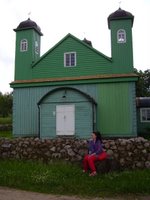 This is a Tatar mosque in Kruszyniany. There are living only 7 Tatar descendants there and the mosque is open only for religious holidays when the Muslims from the five Polish Muslim communities are gathering there. We were lucky to meet one of those who live in the village and we could see the mosque inside. We've also been told that the leader of Polish Muslim community is a woman! Wow, it was really surprising, especially that, as he said, they've adopted most of the Polish cultural and behavioural patterns so women as a leader for Polish and Muslim society was a big deal for us.
This is a Tatar mosque in Kruszyniany. There are living only 7 Tatar descendants there and the mosque is open only for religious holidays when the Muslims from the five Polish Muslim communities are gathering there. We were lucky to meet one of those who live in the village and we could see the mosque inside. We've also been told that the leader of Polish Muslim community is a woman! Wow, it was really surprising, especially that, as he said, they've adopted most of the Polish cultural and behavioural patterns so women as a leader for Polish and Muslim society was a big deal for us.
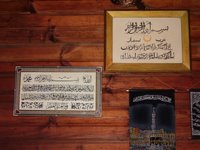
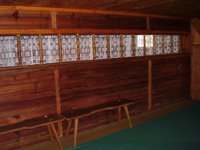
The Tatar cemetery mizar was place we were also surprised with. We were ashamed that we know SO little about our country. Shame on all of us who ignore the beauty right next to our fence!



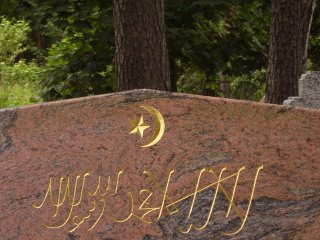

Two kilometres from there we visited a Jewish cemetery in Krynki (in Polish, about Jews in Krynki in English here.
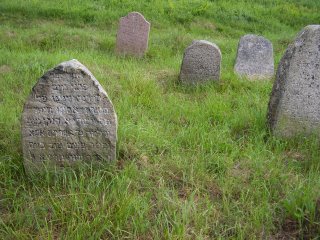



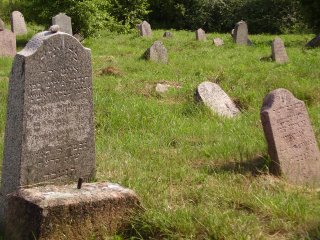
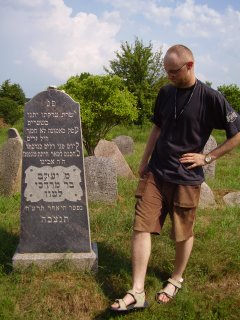
On the other side of the fence (now, literally) the Orthodox Church cemetery.


There was also a Catholic cemetery there but as I've visited those ones from the day I could walk I just didn't do any photos there. Actually, I should do this because Polish cemeteries looks quite different then those in West Europe.
10 kilometres from there, in Bialowieza, we visited Miejsce Mocy (The Place of Power), the Old Slavic ritual place. Travel.poland.com says: "Amid oaks and pines, sometimes with multiple trunks growing out of the same roots, there is a mysterious stone ring. Diviners claim that it generates an exceptionally strong magnetic field beneficial for humans. This strange energy removes fatigue and relieves pain. Bialowieza is said to be situated on a transcontinental radiation line which connects places like Gniezno, a legendary cult place in the Hartz Mountains, and a Catharist chapel in Druggelte, Westphalia." It's not a Stonehenge but it is worth seeing, especially that the place is situadted in the middle of Bialowieza Primeval Forest. It made me think about the difference between Polish and Norwegian treasuring the old history. While in Norway the medieval history for instance is one of the most important tourist target and one of the reasons to Norwegian pride, in Poland people seem to forget about our ancestors.


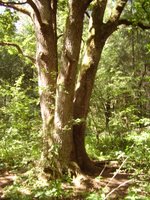
 "If you came here for visdom and knowledge, ask and they will answer"
"If you came here for visdom and knowledge, ask and they will answer" "If you brought here with you your "self" and want to organize the world forgetting God, leave this place alone, turn back on your own ways. They will lead you to the destination anyway"
"If you brought here with you your "self" and want to organize the world forgetting God, leave this place alone, turn back on your own ways. They will lead you to the destination anyway"Having experienced the cemetery diversity on so little space, the is one thing I wish to my country and to the whole world is that the living ones live beside each other as well so the dead ones (with all respect). "But they all are separated! Jews, Muslims, the Orthodox and Catholics, what a difference?! Couldn't they just be buried at the same place? It is enough we are separated when alive!" said a friend of mine. Maybe could, maybe not - we all know it is not so easy as it could seem. But the fence (= boundary) didn't make on me impression of an artificial division. Personally, I didn't find it problematic that all the three cemeteries are clearly limited. I think rather that those spaces are needed and as they outline some other ones for those who are still mourning after their loved ones they also keep some order in the religious universe. Anyway,
I am not religious. But visiting all saint places made me behave like a typical neophyte. I do not want to break any rules, not to offend anybody, not to make others feel uncomfortable and not to make anybody put curse on me:) So the funny picture at the end of this post. We were just going to enter St. Nicolas Orthodox Church in Bialowieza... (no no, I am not pretending being Orthodox - especially that at the place we were - Bialowieza, Suprasl, Krynki, Hajnowka, Grabarka - they are not too rigorous about covering the head! It is just a funny shot, I think)
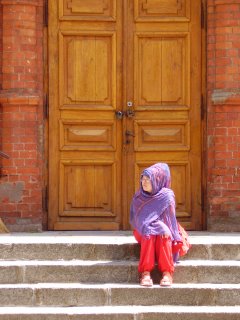
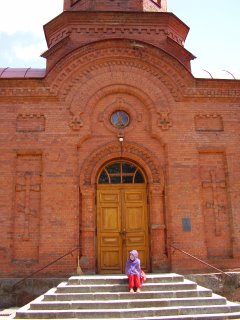
Labels: ethnicity, multicultural, Poland, religion
<< Home